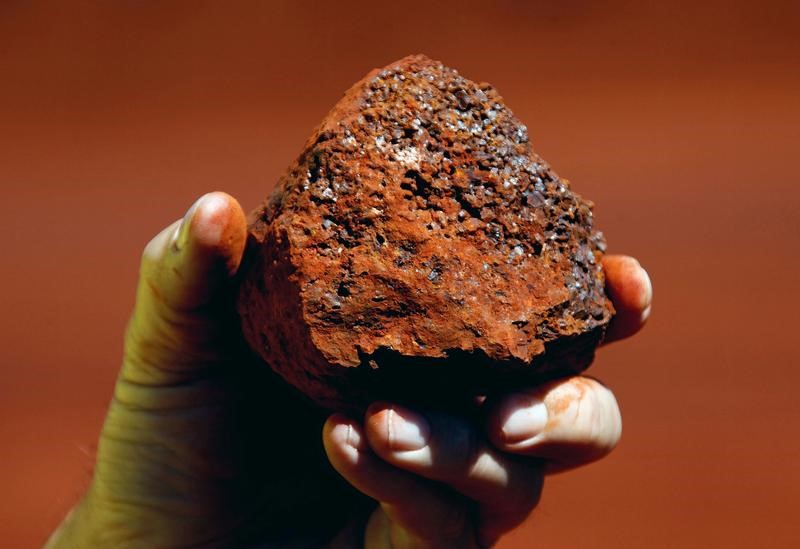SYDNEY (Reuters) - Australia on Monday said it expects iron ore prices to average $51.50 a tonne this year, down 20 percent from 2017, because of rising global supply and moderating demand from top importer China as its steel sector shrinks.
The world's top three mining companies, BHP and Vale rely heavily on iron ore sales for the bulk of their revenue despite efforts to diversify more into other industrial raw materials, such as copper, aluminium and coal.
Brazil-based Vale is planning to lift iron ore exports 7 percent in 2018 to 390 million tonnes. In Australia, Rio Tinto (LON:RIO) and BHP, along with Fortescue Metals Group aim to add about 170 million tonnes of new capacity over the next several years.
The forecast price decline -- from an average of $64.30 a tonne in 2017 -- continues into 2019, when the steelmaking raw material will average only $49 a tonne, according to the Department of Industry, Innovation and Science.
"The iron ore price is expected to experience some ongoing volatility in early 2018, as the market responds to uncertainty regarding the impact of winter production restrictions on iron ore demand," the department warned in its latest commodities outlook paper.
Iron ore currently sells for about $75 a tonne.
The lower prices will reflect growing supply from low-cost
producers and moderating demand from China as the steel industry there contracts, the department said.
China is in the process of closing ageing, high-polluting steel mills and induction furnaces to curb overcapacity in the sector.
China's President Xi Jinping said in October that fighting pollution was one of the country's key tasks through 2020.
Prices for coking coal, another key steel-making ingredient, are forecast by the department to drift lower over the next eighteen months from last quarter's benchmark price of $192 a tonne as rising supply more than offsets demand.
It also expects thermal coal prices to ease through 2018 and early 2019, with the Newcastle spot price forecast to drop 12 percent to an average $77 a tonne in 2018, and by a further 6 percent to $70 in 2019.
